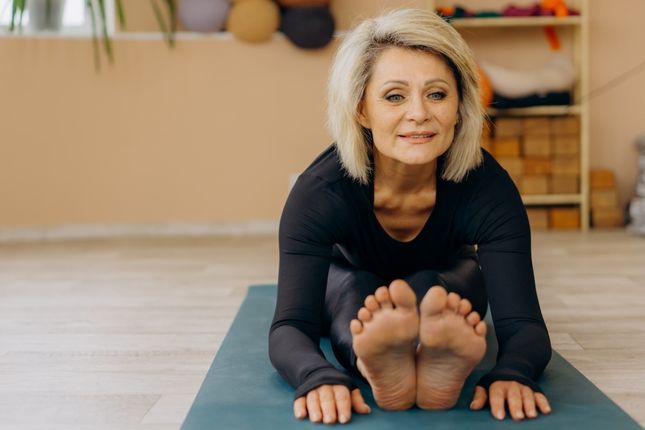Does the idea of exercising in public leave you cold? You’re not alone. Home gym equipment has soared in popularity and affordability in recent years, and thanks to the internet we now have access to many excellent fitness videos. So what are the best exercises for Baby Boomers, and what equipment do we need? Read on to find out.
What exercises should I be doing as I age?
In short, strength training is where it’s at for seniors. We start to lose muscle tone after the age of 50, and strength training is vital for offsetting this. It improves balance and coordination, reduces your risk of falling, strengthens your bones, alleviates back and arthritic pain, and improves sleep.
While many of us associate weight lifting with hardcore gym junkies in string vests, you can actually do a lot of strength training in your home, using your own body as your ‘weight,’ or with dumb bells and resistance bands. A simple weekly strength training session will offset muscle and bone density loss and boost your metabolism, which keeps your weight stable and is great for energy levels and mood.
What exercises count as strength training?
Water aerobics is ideal for Boomers as the resistance of the water builds your muscles while also supporting your body, reducing the risk of any injuries.
Chair yoga is a wonderful low-impact exercise; here’s a Chair Yoga video from one of the internet’s best-known yoga instructors, Adriene.
Resistance band workouts are great for building strength and maintaining balance. Here’s a simple video that shows you how to use them.
Pilates focuses on building core strength and is excellent for back pain. You’ll find many videos online, or you can go to classes and mix them up with home sessions.
Lightweight dumb bell training is excellent for maintaining muscle strength and toned arms – here’s a 10-minute dumb bell workout to try.
Walking is one of the best all-round exercises you can do – it’s low-impact, great for your mood and a good cardio workout if you maintain a brisk pace, plus clocking up 10,000 steps a day is now proven to reduce your risk of dementia. Wear a FitBit, and if your step count for the day is low, get outside to boost it. With the rising popularity of podcasts and audiobooks, hitting your daily target has never been more enjoyable.
Body weight workouts use your own body weight to create resistance – think push-ups, planks and gentle squats without weights. Here’s a 15-minute workout from a physiotherapist you can try at home.
What equipment should I buy?
While you don’t need to buy anything, you may want to invest in a few of the following items to make workouts more challenging and enjoyable.
- Resistance bands are great for strength conditioning. Inexpensive and easy to use, you’ll find many videos on YouTube to help you maximise their benefits.
- A stability ball encourages good posture and improves balance. You can also do some simple pilates-style exercises with one. Here’s a stability ball workout to give you an idea of what’s possible.
- A yoga mat is essential for pilates and yoga as it prevents you from slipping. It’s worth getting a thicker one for added comfort.
- Wrist or hand weights, worn while working out or going for a walk, can add a little extra resistance without putting too much stress on the body.
- In terms of more traditional and expensive equipment, the top four items for seniors are recumbent exercise bikes, which are great for exercising in front of the TV. Rowing machines will build strength and endurance and are a great cardio workout, while Elliptical or Cross Trainer machines are wonderful for both balance and endurance. Finally, a Lat pull-down machine is ideal for building back and shoulder strength and reducing back pain.
Are there any exercises seniors should avoid?
As a rule, regular low-impact exercise is better. You don’t want to risk an injury or muscle strain that will slow you down. Here are a few exercises to avoid:
- Squats with dumbbells or weights.
- Bench or leg presses.
- Long-distance running.
- Abdominal crunches.
- Upright row (a weight training move that is hard on your shoulders – stick to dumbbells.)
- Deadlift – a weight lift from a standing position.
- High-intensity interval training.
- Rock climbing.
Developing a home workout programme
Start slowly – even just marching on the spot for 60 seconds will give your muscles a chance to warm up, and do some cool-down stretches afterwards to reduce aches and pains.
Mix it up: once you know what you like – a yoga video, a dumbbell session, a swim or a walk – choose what you feel like based on your mood and energy levels, and enjoy rest days too.
Let us know your thoughts
Do you have a home exercise routine or have a favourite online instructor? Tell us your tips and suggestions about keeping fit into retirement.


